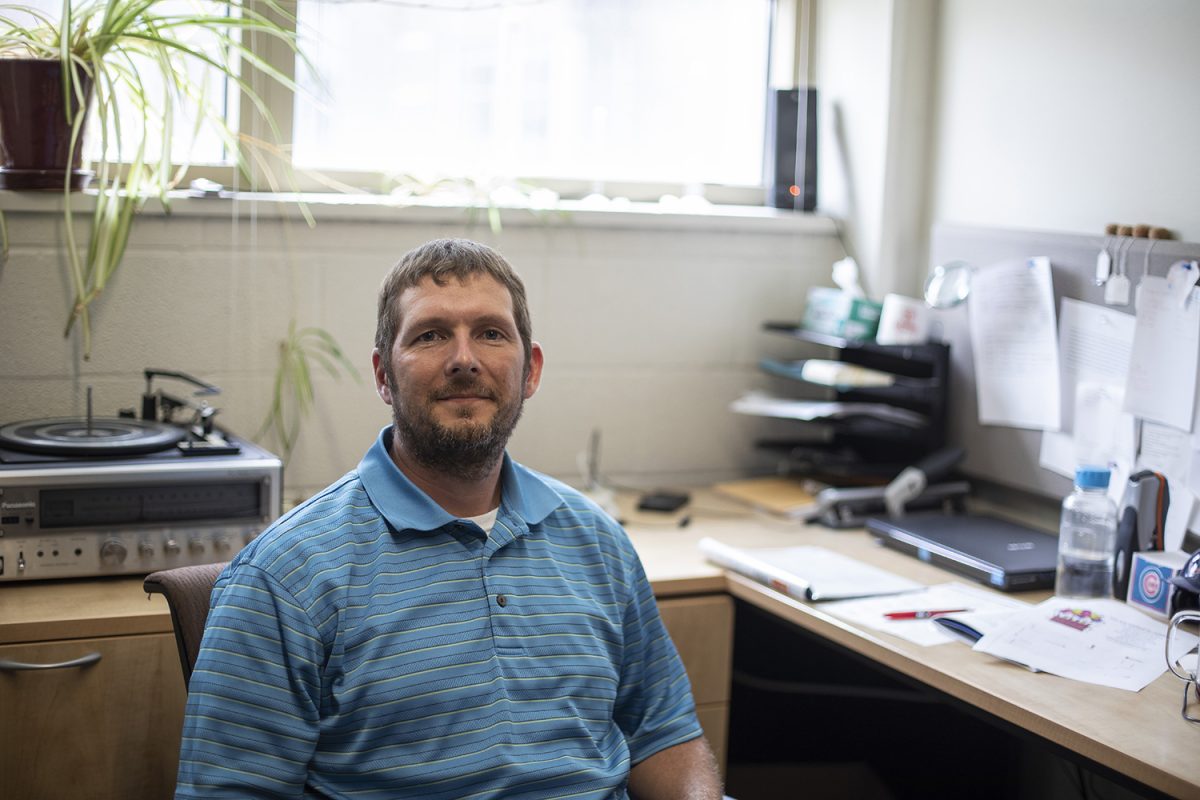Any surface on Earth exposed to air collects a layer of substances or particles on it — it happens everywhere, from computers to bridges. There is a boundary layer between the surface of any given object and the atmosphere.
University of Iowa Chemistry Professor Scott Shaw has been studying these surfaces for 10 years, and now, with a $9 million project funded by the U.S. Department of Defense, Shaw is one step closer to understanding how those layers work.
“His question is about what it is and how it forms,” UI Research Support Specialist Amy Charles said.
Until now, Shaws’ research has focused on chemical phenomena like the settling of substances on a nice, clean window, Charles said. Things from the atmosphere find their way to all kinds of exposed surfaces and, if sticky, will stay attached to the surface.
Over time, the surfaces build up, the driving point behind Shaw’s research. He is exploring how the films develop, how to tell when they are mature, and their general nature overall.
Shaw explained he and his group have been working on the project for several years already in the context of chemistry, but he always bumped into the role biology played in the surface build-up.
“We’ve seen microbes, and there’s fungi, and initially, I was kind of annoyed by those things,” he said. “Quickly, I realized biology is really an important part of the puzzle.”
The project will study the interacting chemistry and biology in environmental films, or “grime,” and take note of how it compares to the biological idea of succession — the study of how a biological community changes over time in a predictable sequence, Charles said.
In primary succession, a new patch of land is created or exposed for the first time. Charles described primary succession as starting in a barren environment, but life eventually begins to grow. Scientists study factors like how organisms got there, how they survive and interact, and what they’re eating. Over hundreds of years, the environment eventually grows into something richer in life and more stable, like a mature forest.
“These films that we’re studying — is there something like this that happens in them?” Charles said. “It’s not just that there is this layer of grime all over everything, but is it basically an ecosystem? If it’s an ecosystem, does it develop in a successional way?”
Iowa State University associate professor Kaoru Ikuma works closely with Shaw, but on the biology side, and is one of seven principal investigators on the project. Ikuma explained that many of the changes in the grime are passive until biology comes into play.
Microbes deposit onto surfaces that are already home to other chemicals, some of which could be a good food source for the microbes.
“Once those organisms attach and there’s a lot of different chemicals surrounding them, their metabolic activity will start to influence the surrounding potentially,” she said.
Following that, the cells alter the microbe’s chemistry and begin to multiply and interact with each other. One fungus may be interacting with a lot of different kinds of bacteria.
“The chemistry that that creates is very different,” Ikuma said. “So, we have this kind of cycle and cascade of events that really get kick-started when the biology starts to occur on these surfaces.”
The project aims to look at the idea of succession on a microscopic scale, Charles said.
The project, spanning five years, is funded by the U.S. Department of Defense and involves faculty from Iowa State University, the University of Hawaii at Manoa, Purdue University, and Texas Tech University.
The project is just getting off the ground, Shaw said, with funds released a month ago and the first $40,000 spent recently for 6,000 different testing surfaces. It will start slowly until samples from all three Texas, Hawaii, and Iowa sites are ready to be tested. Samples can be exposed anywhere from a couple of weeks to four years.
Shaw said he hopes the project will help scientists design materials that can last longer and are more resistant to corrosion, which is currently a trillion-dollar industry.
“Any of those things you touch, there’s always that film present — just thinking about what it is because there’s bacteria and fungi and chemicals and molecules and dust particles,” he said.



